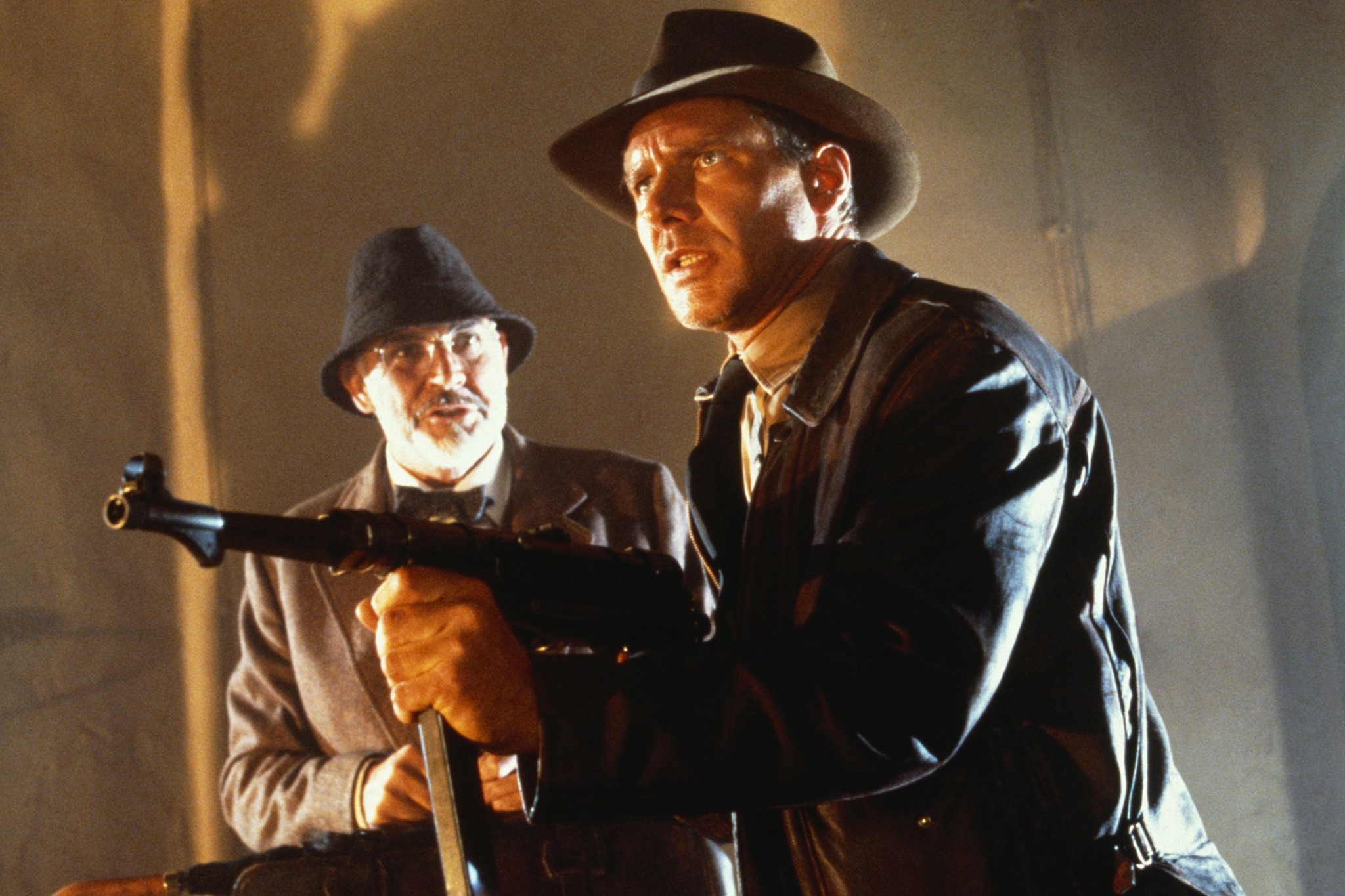“Indiana Jones and the Last Crusade” (1989)

Released in 1989, Indiana Jones and the Last Crusade is the third installment in the iconic Indiana Jones franchise, directed by Steven Spielberg and written by Jeffrey Boam. This film stands as a quintessential example of adventure cinema, combining exhilarating action sequences with a rich narrative centered around historical myth and personal relationships. As the final chapter in the original Indiana Jones trilogy, it offers a captivating blend of daring escapades, familial bonds, and historical intrigue.
Set in 1938, the film follows Dr. Henry “Indiana” Jones Jr. (Harrison Ford) as he embarks on a quest to locate the Holy Grail, a legendary artifact believed to possess miraculous powers. The adventure takes a personal turn when Indiana’s estranged father, Professor Henry Jones Sr. (Sean Connery), is kidnapped by a group of Nazis who are also seeking the Grail. The plot thickens as Indiana and his father reunite and must navigate a series of perilous challenges to recover the Grail before it falls into the wrong hands.
One of the most notable aspects of Indiana Jones and the Last Crusade is its exploration of the father-son dynamic between Indiana and Professor Jones Sr. The film delves into their strained relationship, marked by a combination of admiration, rivalry, and unresolved conflicts. This personal dimension adds depth to the narrative, contrasting with the grand historical adventure that unfolds. Sean Connery’s portrayal of Professor Jones Sr. provides a charming counterbalance to Harrison Ford’s iconic role as Indiana, creating a dynamic and engaging on-screen partnership. Their interactions are filled with humor and poignancy, reflecting both the generational divide and the deep-seated affection that underpins their relationship.

The film’s plot is intricately woven with historical and mythological elements. The search for the Holy Grail, rooted in medieval legend, serves as a backdrop for the action, tying together themes of faith, power, and immortality. The Grail itself represents the ultimate prize, embodying both the allure of religious relics and the perilous quest for eternal life. As Indiana and his father race against time to recover the artifact, the film skillfully blends historical references with fictional elements, creating a narrative that is both educational and entertaining.
Indiana Jones and the Last Crusade excels in its action sequences and set pieces, which are a hallmark of the Indiana Jones franchise. The film features a series of thrilling adventures, from high-octane chase scenes to daring escapes. The opening sequence, set in the American Southwest, provides a glimpse into Indiana’s formative years and sets the tone for the film’s adventurous spirit. The subsequent scenes, including the daring motorcycle chase through Venice and the tense climax in the catacombs of the Grail Temple, showcase Spielberg’s masterful direction and the franchise’s trademark blend of excitement and suspense.

The film’s production design and special effects contribute significantly to its immersive experience. The attention to detail in the set design, costumes, and visual effects helps to bring the historical and mythological elements to life. The Grail Temple, with its intricate traps and hidden passages, is a particularly memorable set piece that captures the essence of the film’s adventurous spirit. The use of practical effects and on-location shooting adds a sense of authenticity and grandeur, enhancing the film’s visual appeal.
Another key element of the film is its engaging supporting cast. Characters such as Elsa Schneider (Alison Doody), the enigmatic art historian who becomes romantically involved with Indiana, add complexity to the plot and contribute to the film’s intrigue. The portrayal of the Nazi antagonists, led by Walter Donovan (Julian Glover), provides a clear and menacing opposition, heightening the stakes of Indiana’s quest.

The film’s soundtrack, composed by John Williams, further elevates the viewing experience. Williams’ score, with its iconic themes and stirring orchestral compositions, complements the film’s action and emotional beats. The music enhances the sense of adventure and nostalgia, reinforcing the film’s status as a classic of the genre.
In conclusion, Indiana Jones and the Last Crusade (1989) is a standout entry in the Indiana Jones franchise that combines thrilling adventure with a poignant exploration of family dynamics. Through its engaging narrative, memorable characters, and expertly crafted action sequences, the film stands as a testament to the enduring appeal of adventure cinema. As the final chapter in the original trilogy, it offers a satisfying conclusion to Indiana Jones’ journey while leaving a lasting impact on audiences. The film’s blend of historical myth, personal relationships, and high-octane adventure ensures its place as a beloved classic in the annals of film history.











